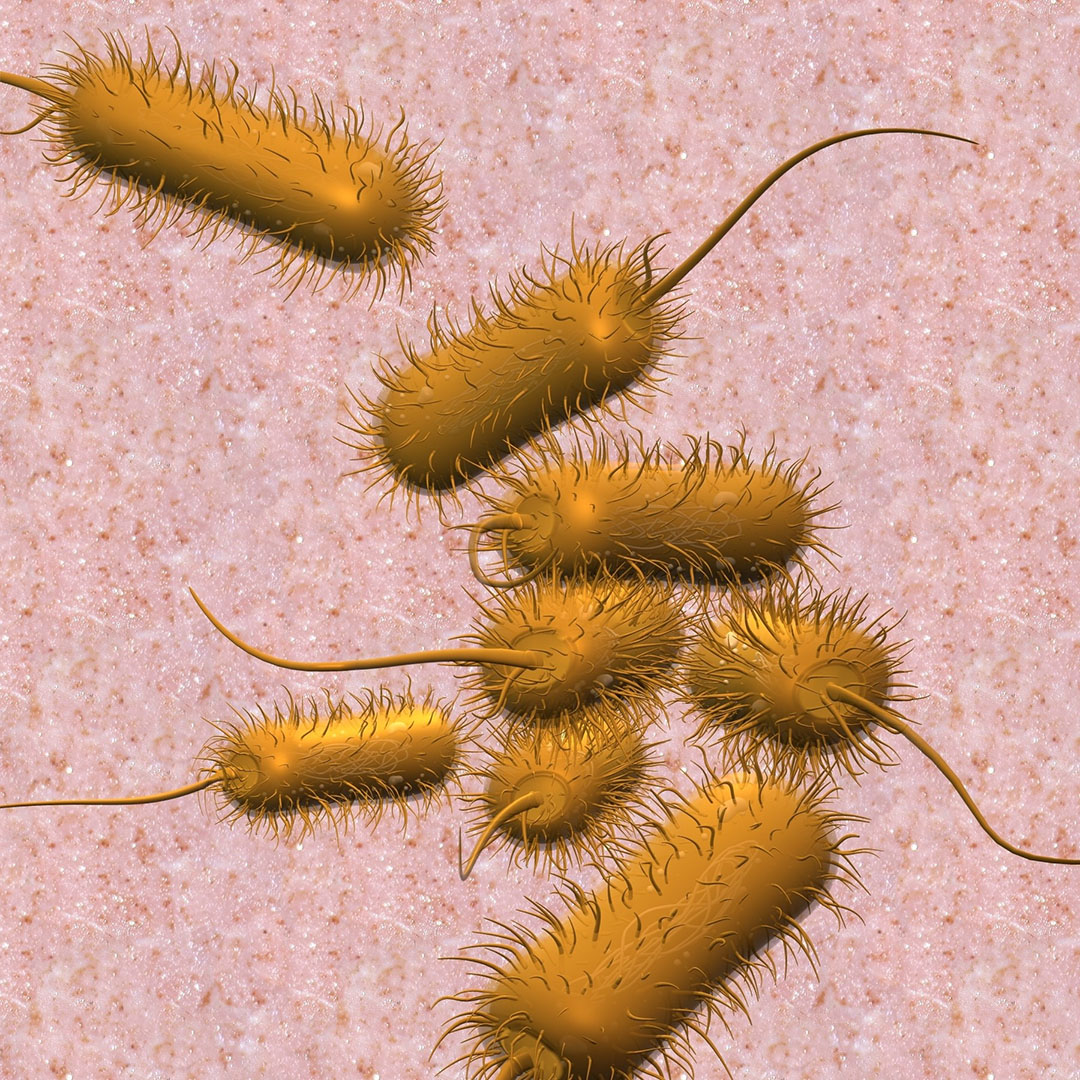Acid based eubiotics’ effect on microbiota

Whilst there are a multitude of acid products available in the feed additive market, the best mode of action for organic acids is actually in the form of a carrier acid. We explain more about how this has led to the development of acid based eubiotics.
There are billions of bacteria in the gastrointestinal tract (GIT) of an animal, the majority of which are beneficial, and help with nutrient digestion as well as producing beneficial compounds. However, an imbalance in such bacteria within the GIT, also known as microflora, provides an opportunity for heightened proliferation of potentially pathogenic bacteria, such as E. coli and Salmonella. An example of a healthy gut microvilli and a challenged gut microvilli is seen in Figure 1. The presence of such bacteria can negatively affect the health status of the animal. Therefore, eubiosis, an optimal balance in both population and diversity of gut microflora, is the ideal condition within the GIT and eubiotics, such as organic acids, can be used to help achieve this balance by managing the pathogenic bacteria populations. The microflora populations within the GIT can be divided into two distinct groups. The first includes acidophiles, such as Lactobacillus bacteria and Bifidobacteria which can proliferate at a lower pH. The second group, known as acidophobes, such as Salmonella and E. coli, cannot. Therefore, the use of organic acids is an effective method in modulating and enhancing the gut microbiome of animals.
Organic acids
The concept of using organic acids in animal feed is not new and organic acid compounds, containing carbon atoms, are commonly used in animal production. Multiple studies have demonstrated the benefits of organic acids in enhancing growth performance, nutrient digestibility and modulating intestinal microbiome populations (Namkung et al., 2004; Abdelqader and Al-Fataftah, 2016). However, the mechanism regarding their action and how the inclusion of organic acids in feed can be beneficial to livestock gut health eludes many. Adding high levels of free acids directly to animal feed are associated with various issues, such as safety and feed palatability. And, whilst there are a multitude of acid products available in the feed additive market, the best mode of action for organic acids is actually not in the acidification of the stomach or feed itself. It is instead in the form of a carrier acid, as opposed to an encapsulated acid or acid salt. The way these carrier acids implement their benefits comes down to simple, basic chemistry. However, firstly we must define exactly what an acid is and how the type of acid can impact the efficacy of a product. An acid is a substance which donates protons, also known as hydrogen ions, in order to create a more acidic environment, i.e. that which has a lower pH. The strength of an acid is determined by a value, known as the pKa value and this pKa value is the ease with which an acid loses its hydrogen ions, a process known as dissociation. This reaction is reversible, so acids are not “used up”. Of all the most commonly utilised organic acids in animal feed, formic acid has the highest pKa value, meaning it dissociates very easily so is considered to be the strongest organic acid. When formic acid is in an environment with a lower pH, such as the monogastric stomach, it will stay in, or return to, its undissociated form. However, formic acid will dissociate in the more neutral pH environment of the gastro-intestinal tract, allowing the organic acids in animal feed to continue to work beyond the animal stomach.
Acid based eubiotics – carrier acids
Such characteristics have allowed for the development of acid based eubiotics (ABEs), which can be extremely useful in influencing both acid-tolerant and acid-sensitive bacteria within the gut of the target animal, or at the feed mill, in the form of carrier acids. ABEs in animal feed can help to balance the GIT microflora, particularly during stressful situations, helping to maintain and achieve optimum gut health to support animal performance. Within the GIT, the organic acid diffuses freely across the surface of the gut microbes inside the cell. And, once here, the acid then begins to dissociate, releasing hydrogen ions and lowering the pH within the cell. Acidophobes, such as Salmonella and E. coli, are not able to cope with this reduced pH environment and this results in cell death. However, as an acidophile, Lactobacillus is better able to deal with the lower pH, so normal cellular function is maintained. This means that beneficial bacteria, such as Lactobacillus and Bifidobacteria are able to proliferate within the GIT. Bifidobacteria are able to utilise complex carbohydrates (Pokuseva et al., 2011), also known as indigestible fibre. Therefore, increased numbers of this bacteria leads to enhanced degradation of these complex carbohydrates, enabling enhanced nutrient utilisation. The degradation of fibre by Bifidobacteria will additionally produce short-chain fatty acids, such as butyric acid, the benefits of which are well recognised in supporting gut health and function (Li et al., 2018). ABE’s can also support the function of tight junctions within the epithelial cells of the gut lumen, aiding in the protection of unwanted, potentially pathogenic, bacteria. This reduces unnecessary inflammation and therefore results in better energy utilisation. As the population of pathogens, such as Salmonella and E. coli within the GIT is decreased, benefits to the animal are seen in the form of reduced nutrient wastage, improved digestive function and a faster cellular recovery.
ABE mineral carriers
There are various types of mineral carriers for carrier acid based eubiotics and these all exhibit different characteristics. Usually the mineral carrier is chosen for particular properties, including stability, durability, holding capacity and availability. Having an inert carrier system enables acid dissociation throughout the GIT of the animal. Anpario has devised an innovative range of mineral carriers to support their unique ABE product portfolio, ensuring a steady and controlled acid release, providing long-lasting eubiotic activity throughout the GIT. These novel mineral carriers also avoid any unwanted binding with feed nutrients and vitamins, as well as protecting the acids from damage within the stomach of the animal, allowing them to work in the subsequent areas of the gastrointestinal tract (Figure 2).
Conclusion
The company’s research has proven that the addition of acid based eubiotics (ABE) to animal feed, creates a beneficial shift in the microflora of the gastrointestinal tract and helps to maintain and develop a well-balanced and diverse microbiota population. It is recognised that eubiosis has a profound impact on the metabolic and immune homeostasis of the animal, positively influencing both animal health and performance.













